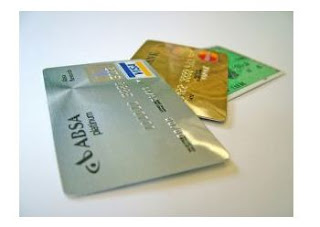This is a guest post by Mike, the owner, and operator of CreditCardForum. There you will see his ratings of the best credit cards for 2012 (for U.S. residents). What follows are 5 of his favorite cashback cards for people who live in Malaysia.
For those who carry a balance, credit card rewards should not be a priority. Why? Because the interest rate you are paying is likely many times higher than the value of your cash back or points. So if you carry credit card debt, your focus should be on finding the lowest APR possible.
However, for those who pay off their entire credit card bill every month (and therefore pay no interest) then reward programs are a lucrative proposition. It’s like getting free money. But which programs pay the most? Well here are 5 credit cards available in Malaysia that give you rewards worth up to 5%.
1. Citibank Cash Back Platinum Card
I wish I lived in Malaysia so I could take advantage of this
offer, because Citi doesn’t offer anything this good in the United States!
You earn 5% cashback on petrol (or as I call it, gas) spending up to RM600 per month. For groceries, you earn 2% on up to RM3,000 spending
each month at selected stores (Servay, Econsave, Carrefour, Tesco, Cold
Storage, Everise, Giant, and Mydin). There’s also a 2% rebate at some
pharmacies (Caring, Guardian, and Watson) and CitiBank online payments for
Celcom, DiGi, Maxis bills. Everything else will earn you a flat 0.3%.
However, the downside is that this card will cost you RM195 per
year. So if you don’t spend much, it might not be worth it. The income
requirement is RM40,000 per year.
2. HSBC Visa Signature
This is a more exclusive card since your annual income must be at
least RM100,000. If you earn that much, this card is a good deal because there
is an annual fee waiver as long as you make at least 12 swipes per year.
The rewards programs will give you 5 points per RM at
participating grocery stores, shopping malls, and department stores (on the spending of up to RM1,000 per month). You also earn 5x points for all dining
and hotel purchases made overseas (up to RM1,500 per month). For all other
spendings, it is 1 point.
With this card your points can be redeemed for different things,
ranging from travel to merchandise. Depending on what you choose, it might be
possible to get a high enough value so your 5x points = 5% cashback.
3. Maybankard 2 Gold Card
This is an interesting offer because you actually get 2 credit cards;
an American Express and a Visa or MasterCard. There is a lifetime fee waive and
the income requirements are more reasonable at RM30,000.
The MasterCard is not very exciting, because it will only earn 1x
TreatPoints for every Ringgit spent. However, the American Express will give you
5x TreatPoints. Best of all, during weekends the American Express card will
also give you 5% cashback (up to RM50 per month).
4. Giant-Citibank Credit Card
If you shop a lot at Giant, this credit card offer is worth considering.
The income requirement is low at RM 24,000 however the annual fee is relatively
high at RM120.00. So make sure you study the cashback program closely to see
whether or not it will be worth it for your spending.
- Tier
1: It
your total monthly spending (at Giant + elsewhere) is under 800RM then you
will only earn 2.5% on the purchases from Giant and 1% at participating
restaurants and utilities.
- Tier
2: If
your total monthly spending is 800RM and above, this is one of the best cashback credit cards around. It will give you a full 5% cashback at
Giant stores and 2% on the restaurant and utility categories.
However, the biggest disadvantage with this program is that your
maximum rebate at Giant stores is RM 400 for Tier 1 and 600 for Tier 2. Your
total annual rebates are also capped at a maximum of 600.
5. OCBC Titanium Master Card
Just like the HSBC Visa Signature, this credit card is free as
long as you make at least 12 purchases per year. The income requirement is
RM36,000 but I have read reviews from customers which much higher incomes who
for some reason, don’t get approved for it. So it sounds like this card is not
the easiest to get.
This has one of the best cashback programs on the market because
it’s based on categories, instead of specific merchants. You will get 5% cash back at grocery stores, restaurants, petrol stations, and utility bills.
Everything else will be a flat 1% rebate.
With this generous program, it comes as no surprise that there is
a limit to how much you can earn; a max of RM50 per month and 600 per year.
Conclusion?
I own and operate one of the most popular credit card websites in
the United States, so I know the reward programs quite well! We do have some excellent 5% cashback card
offers in the US, but nothing that compares to the above credit cards! So
if you live in Malaysia, consider yourself lucky!











